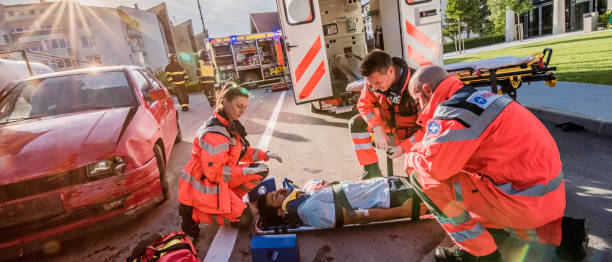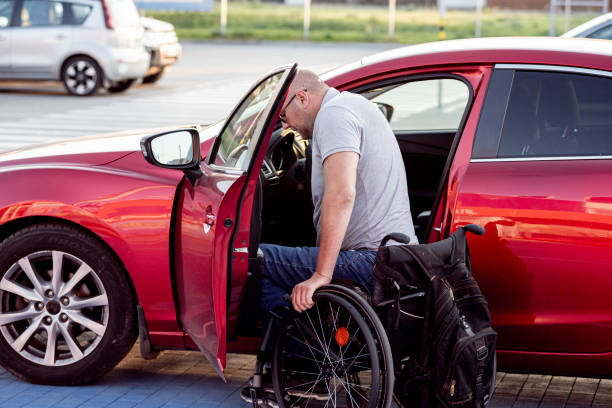According to the National Safety Council, about 5.4 million vehicle-related injuries were medically treated in 2021, and the costs reached an estimated $498 billion.
Car accident injuries fall under 2 categories: impact and penetrating injuries. Impact injuries happen when the driver or their passenger strikes a part of the car’s interior or is ejected from the vehicle and hits the ground or objects. For example, a driver sustained a head injury from hitting the side window.

Penetrating injuries, on the other hand, happen when loose objects inside the vehicle hit or strike the people inside such as shattered glass causing cuts and penetrating into the body.
Both types of injuries can be mild, moderate or severe which is why any injury that develops as a result of a crash should be checked by a medical professional as soon as possible.
Long Term Injuries from Car Accidents
There are injuries that heal in a matter of days but there are also those that can have long-term effects.
1. Traumatic Brain Injuries
Traumatic Brain Injuries (TBIs) are severe brain injuries caused by trauma to the head. According to the CDC, motor vehicle crashes account for 20% of hospitalizations for TBIs every year.
During a car crash, the head can violently whip back and forth causing the brain to hit the skull hard. Mild symptoms of TBIs may include:
- Headaches
- Fatigue
- Nausea
- Difficulty speaking
- Dizziness
Severe symptoms may include:
- Difficulty thinking clearly
- Memory problems
- Communication difficulties
- Changes in personality
- Hearing, vision, or perception issues
- Muscle coordination problems
- Mood changes

Those with severe TBIs don’t have a very good outlook as statistics show that 5 years post-injury, more than half of the patients (57%) are deemed moderately or severely disabled, and 55% are unable to work.
2. Spinal Cord Injuries
Spinal cord injuries involve damage to any part of the spinal cord, with some patients becoming paralyzed below the site of injury. In cases where all four limbs are paralyzed (known as tetraplegia or quadriplegia), it’s estimated that the first year of medical expenses alone can reach $1 million.
The National Spinal Cord Injury Statistical Center (NSCISC) states that the yearly health care expenses for a person with tetraplegia is at least $185,110.
But that’s not all. Those with spinal cord injuries are also often unable to work – only 11.7% are employed one year after the injury.

3. Neck and Back Injuries
Each year there are more than 800,000 cases of neck injuries from traffic accidents. Injuries like whiplash, nerve or ligament damage and herniated discs can have long-term effects. Back injuries from car accidents may involve damage to various parts of the spine and the injured person may experience symptoms like weakness, numbness, tingling, and persistent pain. They may deal with these symptoms for a year or even longer.
4. Mental Health Injuries
Post Traumatic Stress Disorder (PTSD) can arise from witnessing or being involved in traumatic events like motor vehicle accidents. Some people may experience the symptoms right away while others may only notice these symptoms later, even a year or so after the incident. You might have intrusive memories, avoidance of thoughts or discussions about the accident, mood changes and nightmares or engage in self-destructive behaviors, like substance abuse.
5. Loss of limb
A major car accident can result in loss or severe damage of limbs, sometimes requiring amputation. Limb loss can have both physical and psychological impacts, with 36% of those affected experiencing depression. Aside from medical and rehabilitation expenses, the patients often have to deal with costs associated with assistive devices or prosthetics.
6. Chronic pain
Even minor collisions can damage ligaments and nerves, resulting in scar tissue formation, pain and reduced mobility. According to a CDC study, localized pain following a motor vehicle accident may progress to generalized chronic pain over time.

What to Prove in a Car Accident Injury Lawsuit
To succeed in a car accident injury lawsuit, you need to establish several key points. First of all, you must show that the defendant failed to take reasonable care on the road and their actions led to the accident or failed to prevent it.
You also have to demonstrate that your injuries were directly caused by the accident and that the financial losses you’re seeking reimbursement for, such as medical bills and lost income, are a direct result of these injuries.
While it’s relatively straightforward to prove physical injuries like broken bones or cuts requiring stitches, it can be more challenging when dealing with invisible symptoms like headaches, back pain, anxiety and memory loss.
For example, your frequent headaches might stem from a whiplash injury sustained during the collision. However, they could also result from various other things such as hormonal changes or vision issues.
If your car insurance provider refuses to cover your damages even after several negotiations then you may have to consider taking the matter to court.
Seeking Legal Assistance to Get Compensation for Your Long-Term Injuries
Car accident lawyers play a crucial role in making sure that insurance companies pay for long-term injuries resulting from accidents. The treatment, care and other related expenses for these injuries are considered part of the damages that your lawyer can recover on your behalf.

Successfully claiming compensation for your long-term injury hinges on proving its link to the car accident. Your injury and treatment should be thoroughly documented and you need to be transparent with your healthcare providers about your symptoms if you want to strengthen your case.